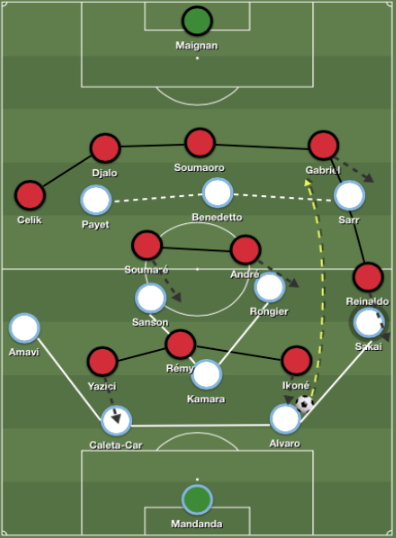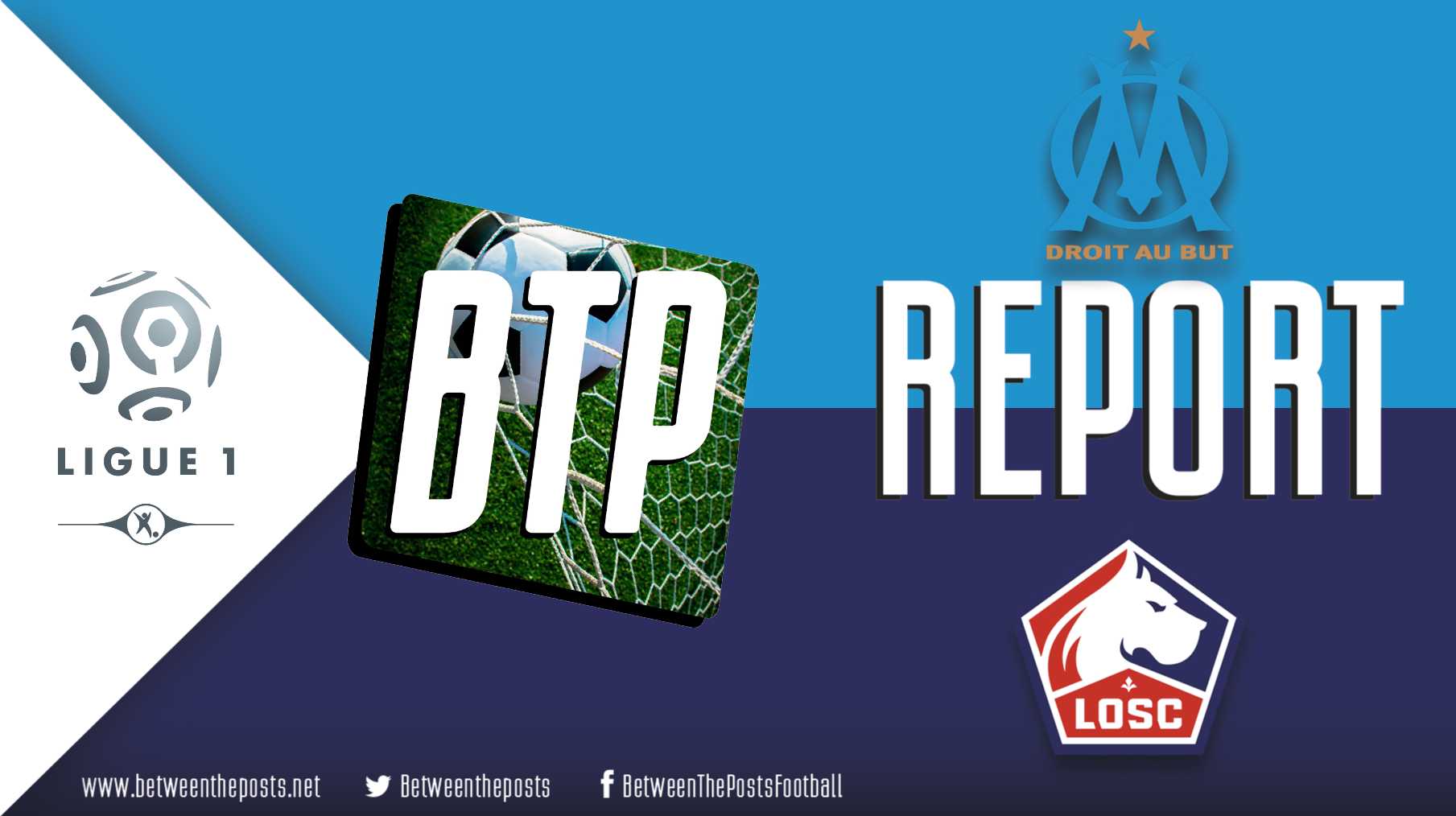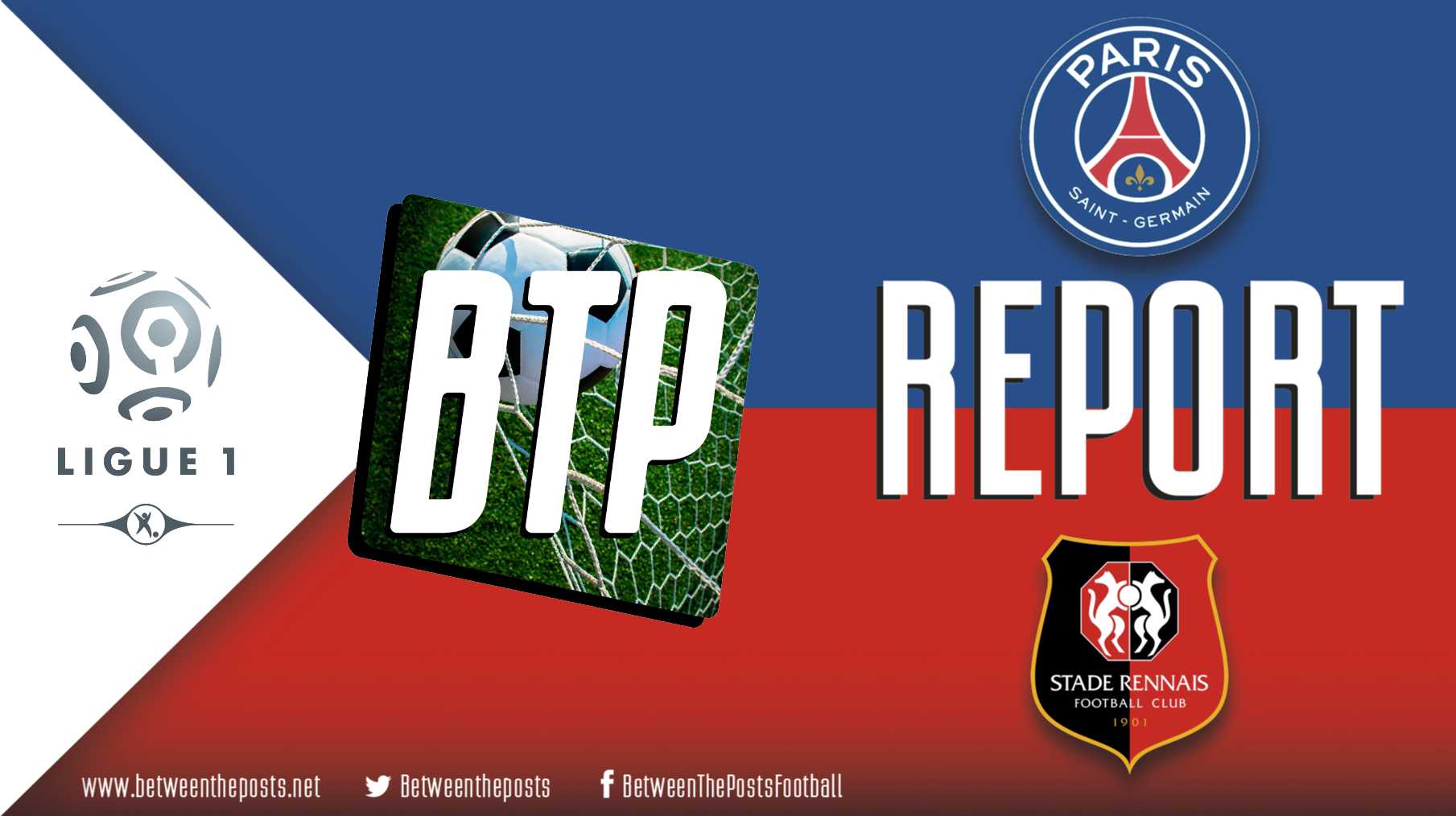Olympique Marseille – LOSC Lille: Individual Mistakes Decide Even Game In Marseille’s Favour (2-1)
From an offensive point of view, this was a very poor game. Because of better finishing, Marseille manufactured two goals in the second half, forcing a reaction from Lille, which came in the form of a single goal and a late offensive run that was enough for a result.
Tactical analysis and match report by Simon Piotr.
After a heavy defeat against their rivals in Paris, Marseille had a good opportunity to react against Lille at the Vélodrome. This fixture was the clash of two direct opponents in Ligue 1 who battle for the same objective: ending the season on the podium. Beating PSG in a title race seems unlikely, but earning a ticket for the Champions League is a genuine objective both these teams strive for.
Lille had acquired 18 points coming into this game, while Marseille had 16, meaning a victory would put the hosts ahead of the 2019 Ligue 1 vice champions.
André Villas-Boas – who made some provocative declarations after the 4-0 defeat against PSG, (“We can’t go to the pharmacy and buy talent, creativity or personality”), which were considered extremely tough towards his squad – needed a result if he wanted to avoid a November crisis.
He kept the 4-3-3 shape the team has been using a lot in place, only making some player changes. The young center back Boubacar Kamara started as holding midfielder instead of Kevin Strootman and Morgan Sanson started over Maxime Lopez, meaning Villas-Boas certainly wanted more physicality in midfield. It is also worth mentioning that Jordan Amavi returned as the left back, meaning Hiroki Sakai returned to his favorite right back position too. Dimitri Payet was left winger again, and Bouna Sarr was fielded as right winger in the offensive line instead of Valère Germain.
Lille came to Marseille with the 3-4-3 system Christophe Galtier has recently implemented, changing the trademark vertical 4-4-2 system for a shape bringing more density in central defense. His offensive line was composed of Jonathan Ikoné, Loic Rémy and Yusuf Yazici.
A very unproductive first half
The game started with a somewhat good level of intensity according to Ligue 1 standards, but technically, both teams showed actual limits in the execution, and in their ambition.
Despite being away, Lille chose to press pretty high during Marseille’s buildup, the 3-4-3 shape Galtier put in place naturally allowed them to match the opposition’s shape to block off every forward solution on the ball side. Marseille were never able to play more than a few passes under pressure and quickly played long balls forward to avoid losing the ball in dangerous areas.
 Lille’s 3-4-3 system mirroring Marseille’s 4-3-3 shape in the buildup, allowing Lille to create one-against-one press everywhere, even though the wing-back on the far side would remain close to the center-backs to secure numerical superiority against the forwards.
Lille’s 3-4-3 system mirroring Marseille’s 4-3-3 shape in the buildup, allowing Lille to create one-against-one press everywhere, even though the wing-back on the far side would remain close to the center-backs to secure numerical superiority against the forwards.
Marseille were not able to find the solution tactically or technically to get past Lille’s pressure in a very productive way offensively. Lille’s approach was more proactive and interesting than Marseille, who opted to hold a more medium oriented block defensively, A medium block refers to a team that retreats in their own half out of possession, generally only disrupting their opponents some way into their own half. but Lille’s ambitions were very limited in possession.
Whereas Marseille were forced long most of the time, Lille played long balls forward despite having almost no high pressure on them. This resulted in 66 long balls played from both teams in the thirty minutes of effective play in the first half, more than two balls going in the air per minute. This created something akin to a tennis game, with the ball flying from one end of the pitch to the other.
Playing some route one football with constant long balls is understandable when you have quality in the air or proper target men, however both these teams lacked those profiles in their offensive lines. Marseille’s front three was composed of Payet (classic number ten starting from the left), Benedetto (short combinations and box finishing player) and Sarr (winger asking the ball in his feet by the touchline).
The same assessment goes for Lille’s side, with Ikoné (technical and versatile second striker), Rémy (versatile forward) and Yazici (winger of number ten), the forwards from both sides did not stand a chance in the air even against average Ligue 1 center-backs.
Marseille and Lille kept neutralizing each other, and the game started to turn into a somewhat appalling display technically, both teams having less than 75% pass success. The moment symbolizing that fragility under pressure the most was Duje Caleta-Car almost chipping the ball in his own goal on a 45 meter back pass, resulting in a corner kick directly hit in the stands by Lille.
Clearly not the best way there is to play football. The first half ended with only three shots from Marseille, all off target, and not a single attempt from Lille.

Events go Marseille’s way
Only two minutes after the players came back from the dressing room, Payet curled a set-piece into the box. Mike Maignan, Lille’s goalkeeper, released the ball as he fell and Sanson took advantage of that to score the first goal. A clumsy way of scoring, though a perfectly fitting way of opening the scoring in this match.
Both teams had kept the same tactical setups, but the opening of the score did change the dynamic of the game. Whereas both sides were sharing more or less the same amount of possession in the first half, Lille had now to chase the score, resulting in having the ball more than 60% of the time until the final whistle.
Then Lille manager Christophe Galtier added a little twist to his tactical approach, with the 3-4-3 system switching to a 3-1-5-1 shape, with Soumaré as only holding midfielder and André between the lines like the forwards.
The offensive intentions were clear, but Marseille prevented them from creating big chances. Indeed, their level of compactness was good, and it was very difficult for a player comfortable between the lines – like Ikoné for example – to receive the ball with some space and create danger.
As the expected goals The amount of goals a team is expected to score based on the quality of the shots they take. suggest, the level of offensive danger created remained very low. In addition to Lille’s chance creation struggles, it was difficult for the hosts to be dangerous on offensive transitions.
Eventually on a higher ball loss from Lille (keep in mind that the game was still technically poor), defender Gabriel ended up scoring an own goal, putting Marseille two goals ahead. Lille almost immediately reduced the score though Adama Soumaoro on a corner kick, probably well warmed up after heading the balls so many times defensively.
Nevertheless, the last ten minutes were not enough for Lille to equalize, their last chance was spoilt by Victor Osimhen (who had replaced Rémy upfront) in the extra time on a good cross, leaving the victory to Marseille.

Takeaways
After being crushed by PSG the French Classique, Marseille probably needed the result more than the manner against a direct rival for the Ligue 1 podium. This is exactly what happened, the game had nothing unforgettable, but Marseille were solid enough and took advantage of a favorable game scenario. Villas-Boas’ choices to add a more physical touch in midfield was rewarded with the defensive performance and the high volume of duels won by his team.
This probably relieved the club for now, but we are still waiting for the Portuguese coach to create a real dynamic into his team to meet the club’s European objective because not every game is going to be as fortunate in the future.
Use the arrows to scroll through all available match plots. Click to enlarge.
Check the match plots page for plots of other matches.




Comments